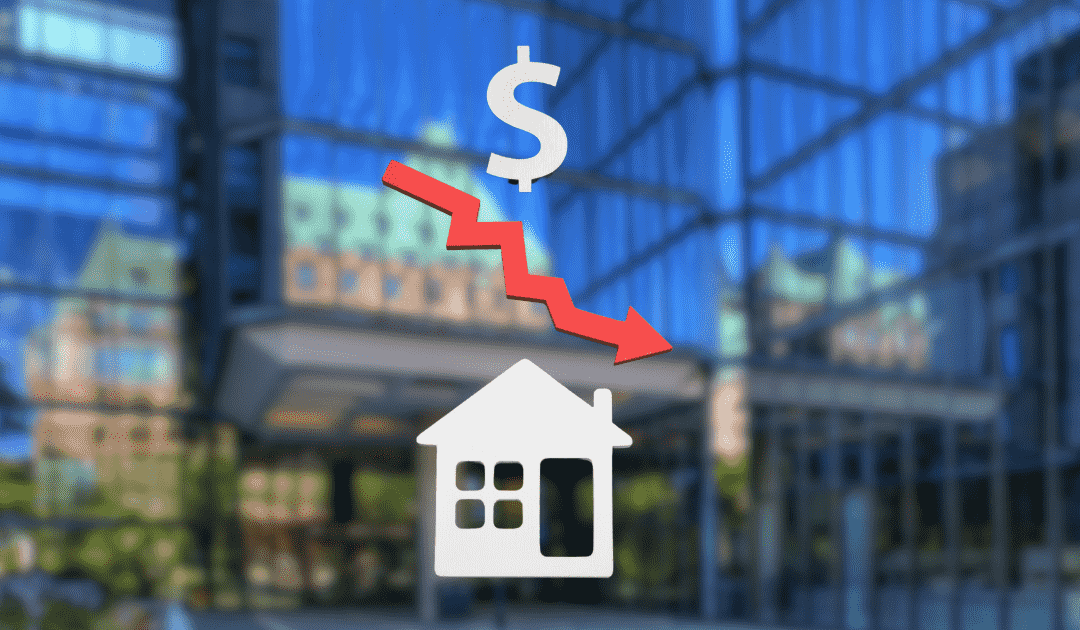-

- Search
- PROPERTIES
- Leasing
- Investment
- Resources
- Community
- Our Team
- Contact



The latest data from RBC Economics suggests that, following October’s half-point rate cut, a second consecutive 50-basis-points reduction from the Bank of Canada is likely to land in December.
The Big Five bank anticipates that further easing could gradually revive homebuyer activity across the country, as seen with a modest 1.9 per cent rise in sales from August to September. “We think interest rate cuts will open the door to a growing number of buyers who’ve been sitting on the sidelines for some time,” Robert Hogue writes in RBC’s Monthly Housing Market Update, highlighting the prospect of affordability improvements for potential homebuyers.
September marked the second consecutive month of growth in sales, and RBC economists believe the trend could gather momentum as the central bank eases monetary conditions further, particularly as cuts are expected to deepen. “Our view is that sales will continue to pick up as the Bank of Canada cuts rates further,” notes the report.
The uptick in sales is just one side of the market’s recent shifts. Sellers have been noticeably more active, with listings up 4.9 per cent in September—the biggest monthly gain since July 2023—bringing inventory levels back to where they were at the start of the pandemic. This wave of new listings may reflect seller expectations for stronger fall demand as lower interest rates encourage more buyers to enter the market.
With new listings outpacing sales, inventory levels have been building up, helping to rebalance the supply-and-demand dynamic that became heavily skewed during the pandemic. Currently, the national sales-to-new listings ratio has adjusted to reflect more balanced conditions, with regions like Ontario seeing notable changes. In Toronto, a surge in new condominium completions has resulted in more units on the market, easing some of the previous pressure on buyers.
Property prices have remained relatively flat since spring. The national MLS Home Price Index edged up a mere 0.1 per cent from August to September and is down 3.3 per cent from last year. Some regions are seeing notable shifts; for instance, Vancouver’s sales-to-new listings ratio dropped to 0.4 in September, tilting the market towards buyers for the first time in recent months. RBC notes that this has resulted in a 0.5 per cent price decline, primarily in single-detached homes.
While price growth is modest in these larger markets, other areas—particularly in the Prairies, Quebec, and parts of Atlantic Canada—are still experiencing mild price gains due to tighter inventory conditions. Calgary’s previously constrained market, though recently rebalanced, continues to show one of the nation’s highest appreciation rates.
As RBC economists point out, interest rate adjustments will remain a focal point for market participants into 2025. While December’s anticipated rate cut may further stimulate buyer interest, affordability challenges will likely temper any potential surge in demand. “We believe constrained buyer budgets and growing inventories will keep price gains in check even as demand picks up steam,” they stated. RBC expects a gradual pace of appreciation to return as the Bank of Canada’s rate cuts continue into next year, though markets with severe affordability challenges, like British Columbia and Ontario, may trail other regions.
With economic and labour market uncertainty growing, RBC Economics’ Claire Fan forecasts a softer economic outlook overall, noting that the rate cuts will provide “a necessary reprieve” but likely without a dramatic acceleration in market activity. As Fan outlines, “The reduction won’t be the last one… the BoC hinted at future rate cuts to support a return to stronger GDP growth.” RBC projects that the central bank’s overnight rate could reach 2.0 per cent by mid-2025, which may foster a more robust housing recovery in the latter half of next year.
